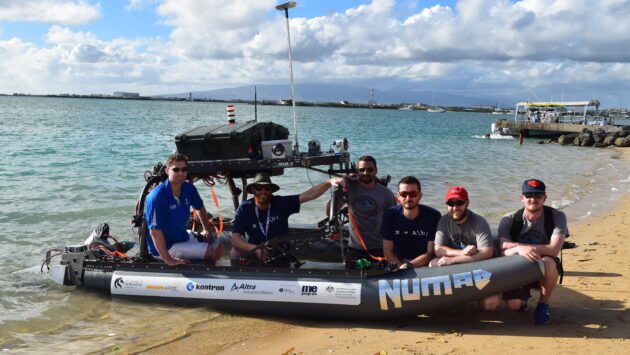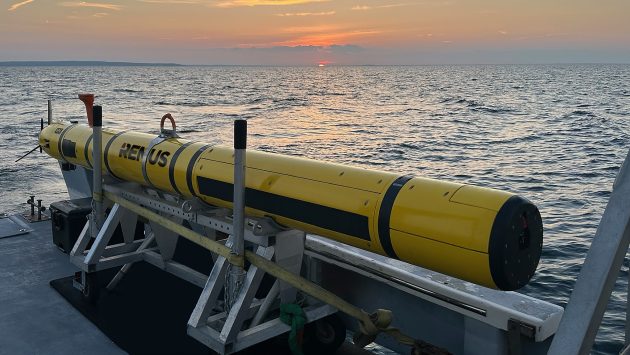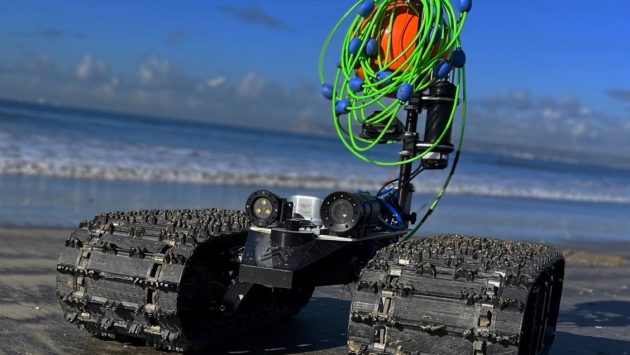Society for Underwater Technology – Evening Technical Meeting
The Future of Subsea Autonomy
At the Society for Underwater Technology Evening Technical Meeting on 12 June 2019 in Perth presentation were made by the Royal Australian Navy (RAN) & Marine Advanced Robotics. The common them of the presentations centred on the Wave Adaptive Modular Vessel (WAM-V) – an innovative class of watercraft (both autonomous and manned) using unique suspension technology to radically improve seagoing capabilities. The articulating system uses springs, shocks and ball joints to minimize structural loading. The result is an ULTRA-LIGHT, MODULAR vessel that can perform in sea conditions where an ordinary boat of similar size could no longer operate. The incredibly SHALLOW DRAFT and arches contribute to the GANTRY CRANE functionality.
Evaluating Autonomous Systems
In a presentation entitled “Evaluating Autonomous Systems”, Lieutenant James Keane described the RAN experimental phase with Marine Autonomous Systems (MAS), and rapidl learning of the core challenges with operating complex capability such as Autonomous Underwater Vehicles (AUV). Before new AUV systems can be deployed, they must be tested and proven ready for integration with the existing organisation and fleet.
MAS will inevitably play an increasing role for future maritime operations and warfare, however, they must first become trusted assets that complement organisational culture and capability. This is a global challenge for organizations using AUV, where robotics control systems are becoming smarter, yet the rest of the organization may not be prepared for their effective employment.
Operational Test & Evaluation (OT&E) is the means to determine readiness of the overall system for operations. OT&E of probabilistic systems such as AUV is notoriously difficult. Yet it is increasingly critical to the achievement for effective and efficient operations that technical capability must be understood and characterized in the context of both the user organisation, and the specific mission.
The presentation explored the approach taken in designing a repeatable, comparable OT&E framework and experiments to determine suitability and readiness of AUV for operations. The intention being that this framework, once established, could then be applied to new and evolving AUV platforms for comparison of capability, and rapid assessment of suitability for purpose.
USV “sheep-dogging” AUV
Lieutenant James Keane also presented on Exercise Autonomous Warrior 2018 (AW18) which was an in international exercise in co-operative marine autonomy, and also an opportunity for the Royal Australian Navy (RAN) to develop and demonstrate experimental capability in conjunction with industry and academia. A 16’ Wave Adaptive Modular Vessel (WAM-V) was developed and deployed as an Unmanned Surface Vessel (USV) ‘sheepdog’ for an Autonomous Underwater Vehicle (AUV), whilst also acting as a test-platform for new control behaviours and autonomy software.
As a member of the AW18 fleet, the WAM-V also demonstrated enhanced capability, such as real-time object identification using machine-learning algorithms developed in-house. The presentation explored the journey to automation, the capability demonstrated by the WAM-V, and the future of robust, persistent USV.
Multi-domain (Air, Sea & Subsea) Unmanned Maritime System of Systems Approach to Expeditionary Mine Counter Measures
Mark Gunderson, CEO, Marine Advanced Robotics, presented on a cooperation with their technology partners to demonstrate to the US Navy an unmanned System of Systems approach to expeditionary Mine Counter Measures (MCM). The unmanned System of Systems included two types of unmanned subsea vehicles, two types of unmanned surface vehicles, and an unmanned aerial vehicle, all working in coordination to achieve a complex task. The intent was to expand the operational effectiveness beyond any of the individual vehicles by utilising synergistic capabilities, while simultaneously decreasing overall cost with a network of affordable systems.
Read More: BlueZone Group & Marine Advanced Robotics
Read More: Deployment of a SeaBotix vLBV ROV from a WAM-V Unmanned Surface Vehicle
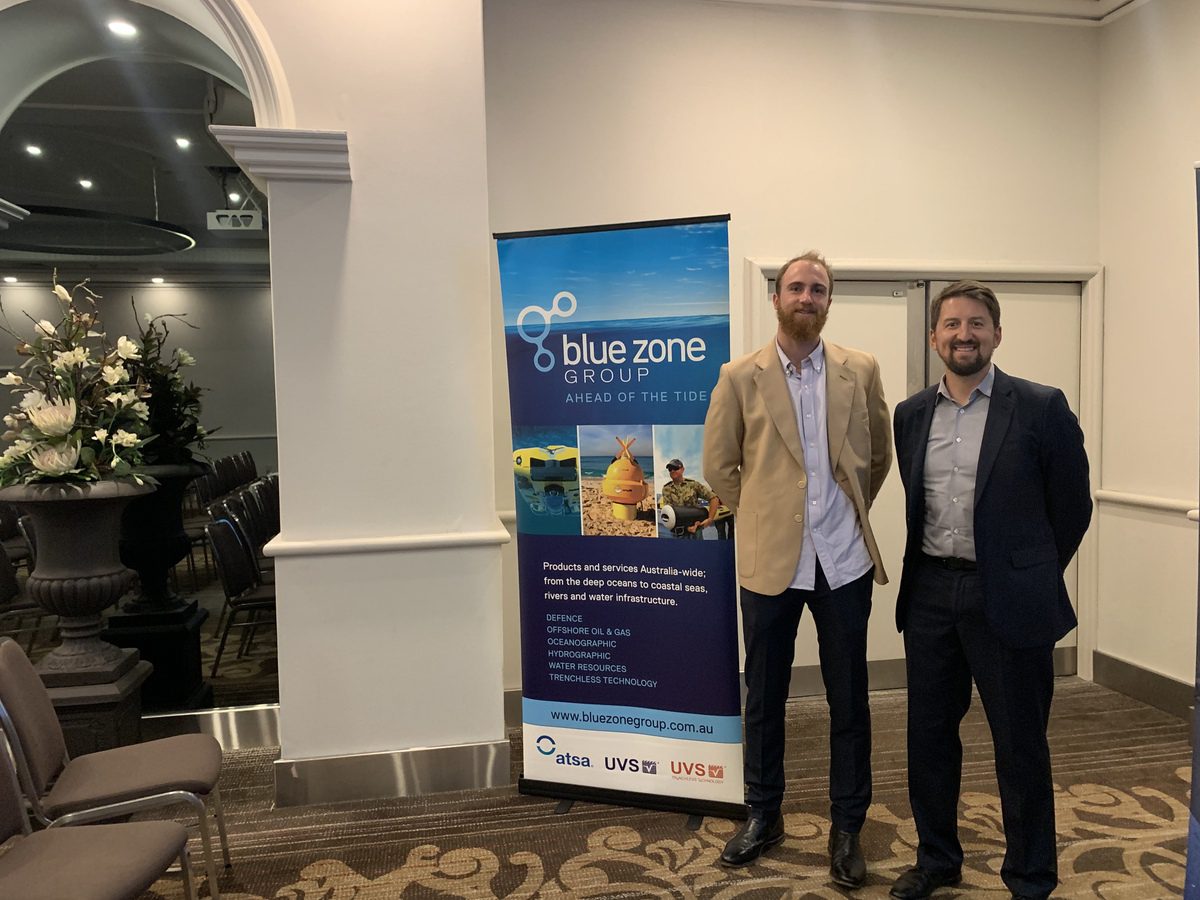 |
| Lieutenant James Keane, Capability Realisation Engineer, RAN and Marine Advanced Robotics CEO & Founder, Mark Gundersen at the SUT Evening Technical Meeting. |
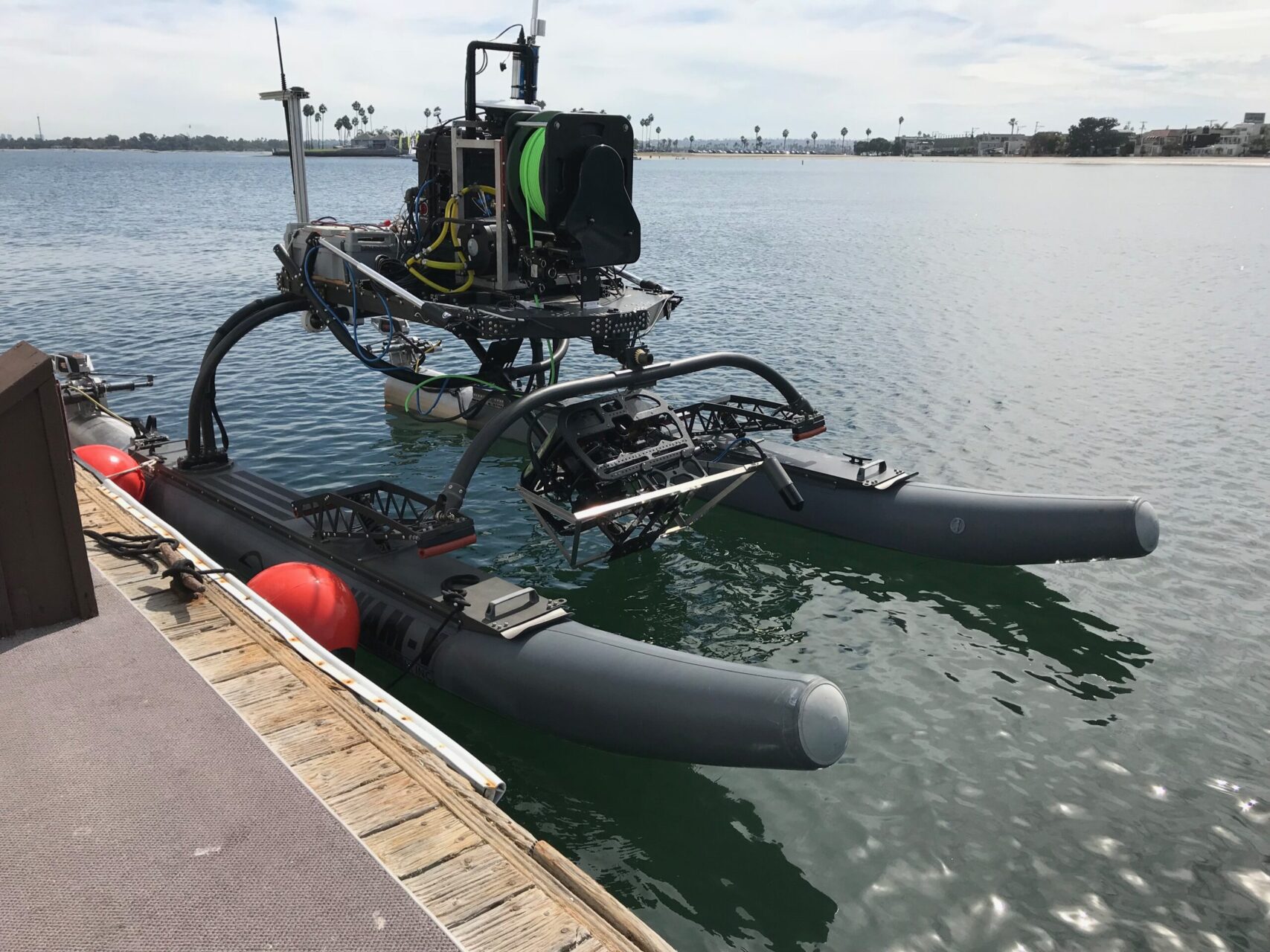 |
| The unique ‘catamaran’ design of the WAM-V enables launch and recovery of the SeaBotix ROV between the pontoons. |
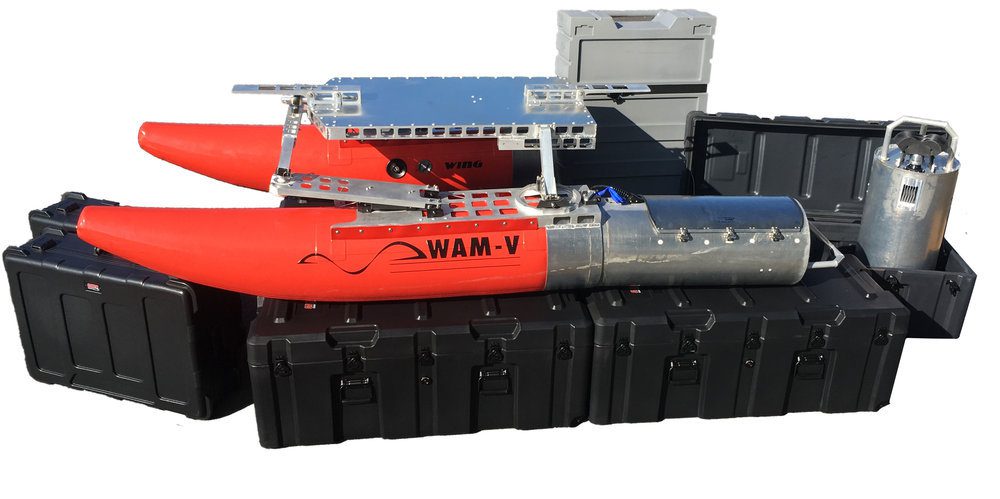 |
| WAM-V 8 has best in class portability. Disassemble and pack into shipping cases that can be checked on most domestic airline carriers. WAM-V 8 is the most portable autonomous surface vessel (ASV) on the market. |

